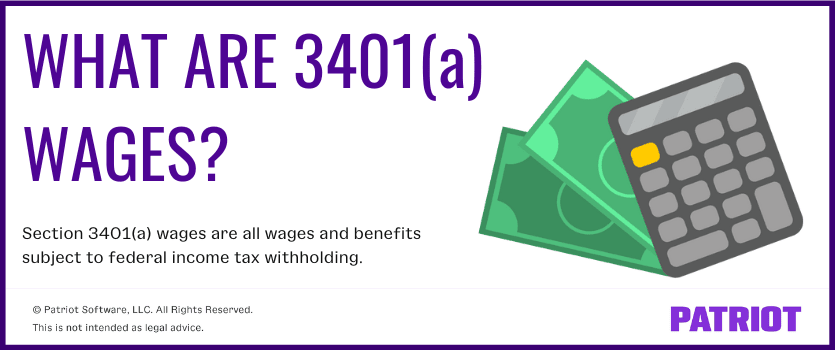As an employer, you’re probably familiar with W-2 wages and how they work. But, have you ever heard of 3401(a) wages? If you offer retirement plans, it’s time for your crash course. Get the lowdown on what 3401(a) wages are, how they work, and other 3401(a)-specific rules.
What are 3401(a) wages?
The 3401(a) compensation definition typically comes into play when it comes to retirement plans, like 403(b). Section 3401(a) wages are all wages and benefits subject to federal income tax withholding (aka FIT). Code Section 3401(a) provides the definition of compensation for federal income tax wage withholding for retirement plan purposes.

Items subject to federal income tax withholding can include (but are not limited to) wages, salaries, commissions on sales and insurance premiums, bonuses, and salary reduction amounts. Amounts realized from sale or exchange of stock acquired under qualified stock options and excess group life term life insurance are excluded from federal income tax withholding.
There are three things included in 3401(a) wages that may not be included in other definitions of compensation:
- Distributions from nonqualified plans
- Costs of group-term life insurance in excess of $50,000
- Tips under $20 per month
Compensation items that do not appear on an employee’s pay stub but are included in year-end W-2 reporting (e.g., taxable cost of group-term life insurance in excess of $50,000) are not included in Section 3401(a) wages.
3401(a) compensation vs. W-2 compensation
When dealing with retirement plans, you may notice both 3401(a) compensation and W-2 compensation.
W-2 compensation and 3401(a) compensation are similar. However, the main difference is that W-2 wages can include income from excess group-term life insurance.
Retirement plans and 3401(a) wages
When starting a retirement plan for your employees (or looking into one for yourself), look at the compensation definition. The definition can vary from plan to plan. So, it’s imperative that you know the definition like the back of your hand so you know what compensation includes.
When it comes to your retirement plan, you may look at the 3401(a) compensation or W-2 compensation definition, depending on your plan’s requirements and (sometimes your preferences).
If you can go by either definition, make sure you know what 3401(a) wages include. If you can choose which compensation definition to go by, compare each and choose the one that’s most appropriate for your business.
Keep in mind that other compensation definitions may apply to your retirement plan, too. For example, you may need to deal with includible compensation or 415 safe harbor compensation. Do your research ahead of time to ensure you understand your plan’s definition and what to go by.
3401(a) wages: Resources to check out
Craving more information on 3401(a) wages? We’ve got you covered. Check out these handy resources to learn more:
This is not intended as legal advice; for more information, please click here.


